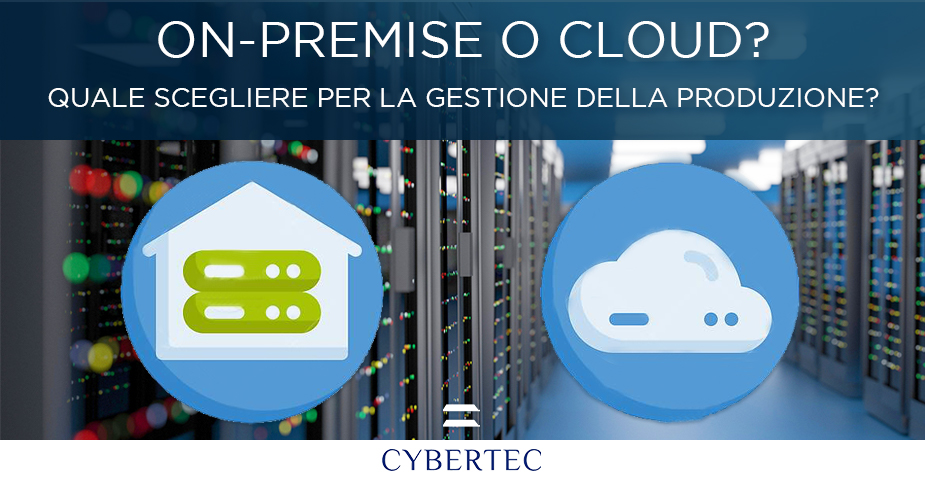In this article we want to support the manufacturing company in the choice between acquiring Advanced Planning and Scheduling software as a cloud service or as on-premise software. The advantages and disadvantages of each solution are then indicated in order to direct the customer company in the final choice considering the company’s needs and internal policies.
On-premise or cloud?
When looking for a new APS system for the planning and scheduling of your company’s production, often one of the most critical aspects in the final decision is the choice between the solution implemented on-premise and the solution provided via cloud service.
The doubt that companies often have, when choosing one solution over the other, derives from the fact that both solutions have different qualities but it is necessary to understand which of the two best suits the needs of their company.
The Differences Between Cloud and On-Premise Software
On-premise and cloud software have several differences, which can lead to the choice of one or the other solution. The biggest difference between these two systems is the way they are distributed:
- On-Premise licensed software is installed locally in the company purchasing the software solution, on company computers and servers;
- Cloud-based software is typically hosted on servers external to the company purchasing it.
The differences do not stop there but also concern other aspects, such as: level of investment, level of performance, level of maintenance and type of infrastructure (Discover the advantages of APS in the cloud).
The required investments for on-premises and cloud
Usually, software offered as a cloud service tends to be considered more expensive than software purchased on-premise, but to understand how things really are, it is good to know the differences between the two systems.
The on-premise solution is generally regarded as a capital expenditure, a large upfront investment, and involves the payment of the one-off licence. With these solutions, however, there are additional costs for the assistance and maintenance service.
The cloud service, on the other hand, is considered by companies as an operational expense, that is, a cost that the organization incurs over time. The cloud service requires a monthly fee for a period described in the contract. In addition, service and maintenance is included.
Given these differences, it should be noted that the initial cost of entry of on-premise software into the company may require additional investments; this is due to the fact that the company must equip itself with hardware capable of supporting the new software and must organize the internal network in order to make the most of the solution purchased. The obsolescence of these parts and the IT staff required for integration and maintenance must then be taken into account. This cost is lowered with the cloud service, as APS software is accessed via web browser from any location. Industry studies show that over time the costs of the system tend to converge.
The costs of on-premises and cloud solutions
The two options also differ from the point of view of costs and their distribution for the various activities and utilities. It may seem that in the long run the cloud service costs more, but considering all the costs, the resources used and the performance provided, the scenario changes. In fact, the rapid obsolescence of IT infrastructures and indirect costs, such as space and maintenance, must be taken into account. Finally, it should not be forgotten that an on-premise APS provides an initial cost that is very high; an APS used with Cloud service allows you to have lower payments on a monthly basis and to be able to use part of the capital for other business needs.
CyberPlan, APS available on-premises and in the cloud
CyberPlan’s APS solution has always been available as on-premise software, but for several years companies have been able to choose to power the production planning department with this tool, using it as a cloud service. An increasing number of companies choose this type of service to benefit from the advantages of cloud APS to plan and schedule their production in an increasingly modern and advanced way, increasing the competitiveness of the production department.
Learn how to improve business competitiveness with modern cloud APS
Make the best decision every day based on easy-to-create, easy-to-read scenarios built from secure data and processes. Anticipate competition by reacting to market changes in the best possible way.
Equip your company with a powerful tool that can be used remotely, giving visibility into what is happening to the production chain, from suppliers to delivery to the customer.
Contact our experts and ask them what you need for more information.

